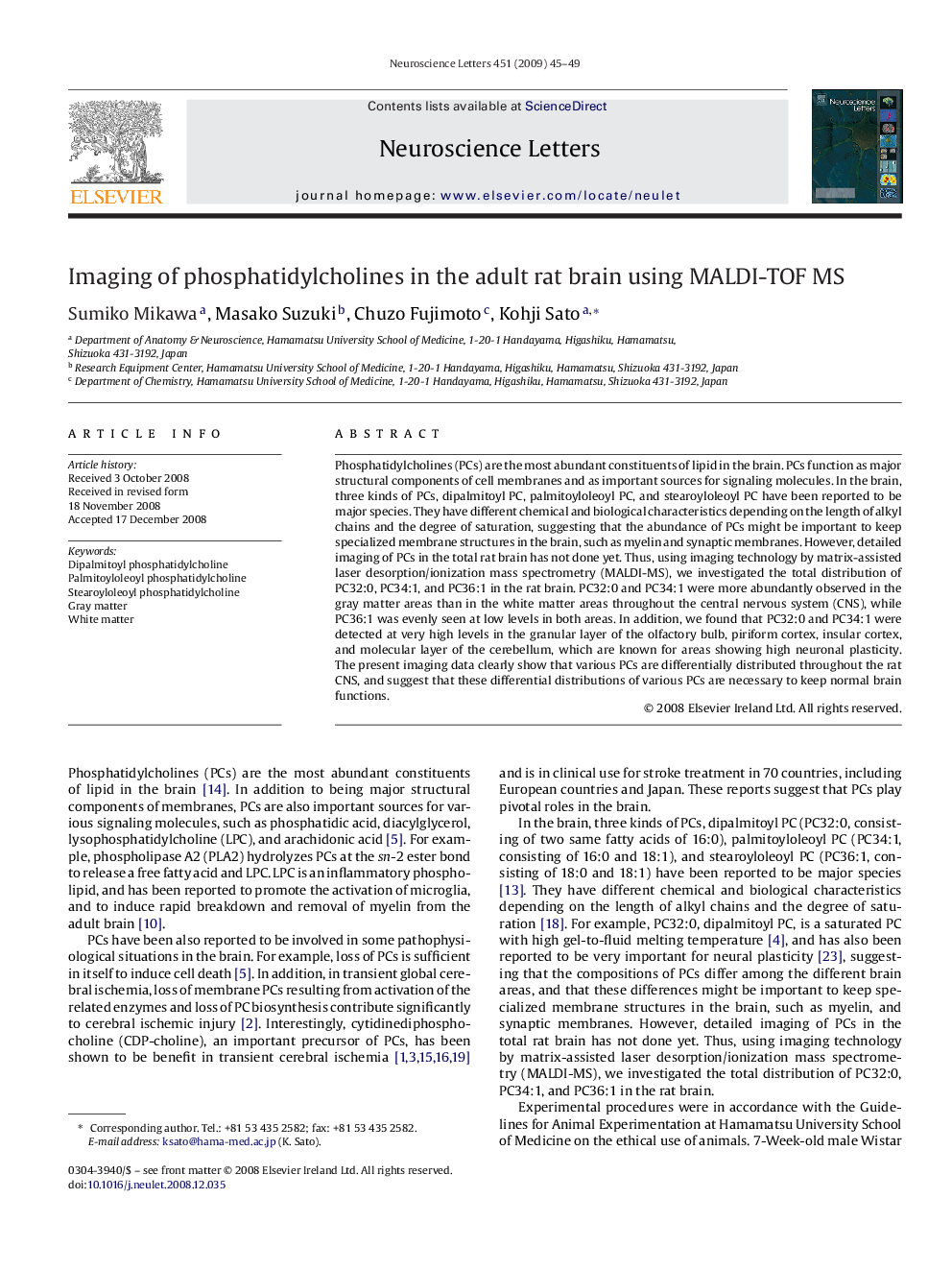| کد مقاله | کد نشریه | سال انتشار | مقاله انگلیسی | نسخه تمام متن |
|---|---|---|---|---|
| 4347818 | 1296862 | 2009 | 5 صفحه PDF | دانلود رایگان |

Phosphatidylcholines (PCs) are the most abundant constituents of lipid in the brain. PCs function as major structural components of cell membranes and as important sources for signaling molecules. In the brain, three kinds of PCs, dipalmitoyl PC, palmitoyloleoyl PC, and stearoyloleoyl PC have been reported to be major species. They have different chemical and biological characteristics depending on the length of alkyl chains and the degree of saturation, suggesting that the abundance of PCs might be important to keep specialized membrane structures in the brain, such as myelin and synaptic membranes. However, detailed imaging of PCs in the total rat brain has not done yet. Thus, using imaging technology by matrix-assisted laser desorption/ionization mass spectrometry (MALDI-MS), we investigated the total distribution of PC32:0, PC34:1, and PC36:1 in the rat brain. PC32:0 and PC34:1 were more abundantly observed in the gray matter areas than in the white matter areas throughout the central nervous system (CNS), while PC36:1 was evenly seen at low levels in both areas. In addition, we found that PC32:0 and PC34:1 were detected at very high levels in the granular layer of the olfactory bulb, piriform cortex, insular cortex, and molecular layer of the cerebellum, which are known for areas showing high neuronal plasticity. The present imaging data clearly show that various PCs are differentially distributed throughout the rat CNS, and suggest that these differential distributions of various PCs are necessary to keep normal brain functions.
Journal: Neuroscience Letters - Volume 451, Issue 1, 13 February 2009, Pages 45–49